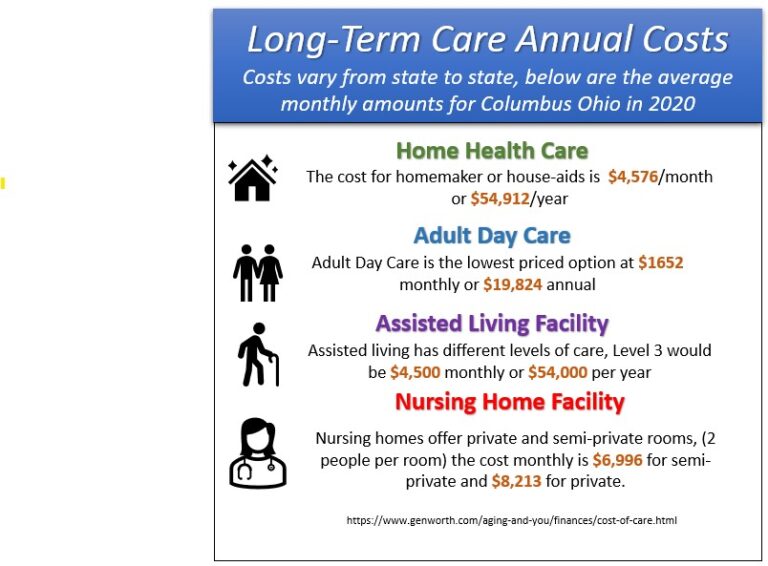

What is Chronic Care?
Before understanding how much Chronic Care costs, let’s review what we mean by Chronic Care or Long-Term Care. Chronic care is long term care, when someone needs help with their ADL’s or Activities of Daily Living, (bathing, eating, transferring, continence, toileting, dressing and or cognitive impairment, dementia) they are in a state of “Chronic Care”. They require constant supervision. The severity of need often determines the cost variables.
For example, if father needs help bathing 2 to 3 times per week, this requires less work then helping him get out of bed, dressed and toileted. Let’s look at another example; maybe your parents live with you, and you need to go to work, while at work, they cannot be left by themselves for safety reasons, an Adult Day Care might be a solution. This option is less costly than having someone in your home while you’re at work, for 8-10 hours per day for 5-days a week. A care worker staying in your home is a fulltime job, depending on the hourly rates and benefits the cost can be substantial. All of this determines the financial liability of Chronic Care.
Who will take care of you?
The other issue when considering the cost of Chronic Care is the change of the nuclear family in the United States and many Western Countries. Families today are smaller and more widespread. Secondly, people have often chosen not to have children, they have savings and assets but no children. This creates a need for hired help to assist with the ADL’s. In the past, a couple with 4-5 children, self-insured themselves against this financial liability. The parent would simply move in with the child in the senior years. However, the number of children born in US families has dropped significantly, hence less family care givers. See attached chart (Fig. 1)[i] In other words, the option of children taking care of their parents is less because of a demographic shift. So let’s look at the costs and options of Long-Term Care also known as Chronic Care.
Types of Chronic Care Solutions
There are several solutions to Chronic Care, the costs can vary depending of the locations of the service provided.
- Home health Care
- Adult Day Care,
- Assisted Living
- Nursing Home coverage
Home Health Care: Home Health is when you have help come to you, in your house, this type of help is variable, 1-24-hours a day, 7 days a week. Usually, most services have a minimum of 2-3 hours per visit. This also includes homemaker services with daily chores being done with outside help.
Adult Day Care: This service is usually the most affordable, it is not full time, only part of the day, and it’s a community environment. Basically your adult dependent is dropped off at the beginning of the day and picked up at the end of the day, similar to child day care.
Assisted Living: This type of care is full-time; assistance is always available for ADL’s if needed. Usually, it is a step below a nursing home facility. Now many nursing homes have “Assisted Living” facilities attached. Assisted Living is variable because someone might only need supervision so they don’t fall when taking a bath, or help getting dressed or taking medications. The more help needed the greater the cost. Cost in many facilities is based on how much assistance is needed, the more independent the less the costs. Many facilities have levels of coverage and costs associated with each level. Level 1 is minimal assistance the most affordable, while Level 3 might mean the resident requires a double assist to get out of bed and ready for the day, the costliest.
Nursing Home: A nursing home is a facility for residents who don’t need to be in a hospital but can’t be cared for at their home. Nursing homes have nursing aides and skilled nurses on hand 24 hours a day. Some nursing homes are set up like a hospital. The staff provides medical care, as well as physical, speech and occupational therapy. You can have shared room (Semi-Private) or your own room. For example, if someone requires an IV they could not stay at an Assisted Living facility, they would require a Nursing Home.
[i] http://www.prb.org/Publications/Datasheets/2014/2014-world-population-data-sheet/us-fertility-decline-factsheet.aspx

